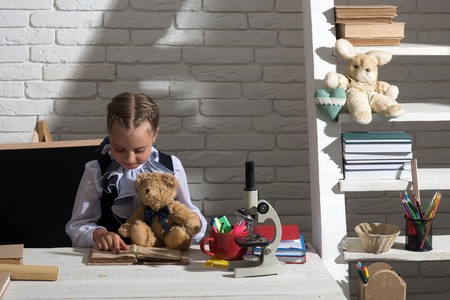
Teddy bears are therapeutic tools that many educators incorporate in their classrooms for a number of beneficial reasons, such as promoting positive interaction and emotional growth during children’s formative years.
Teddy Bears are Transitional Objects 
Blankets, teddy bears, and other stuffed animals hold a special place in our hearts from the moment we are born into this world. These objects are self-chosen and given special value only because we choose to give them this significance.
They mark the earliest phases of our development as humans and also help us cope with separation anxiety. A positive example of this is when a parent drops a child off at kindergarten. The child may feel stricken with anxiety and other uncomfortable emotion, and so to cope they will look for an object to hold onto. These objects are often abandoned once the adult picks the child up, but during the day, the object soothes them during their time of discomfort.
Teddy Bears Encourage Healthy Interaction
Teddy bears provide us with a clear understanding of how a child, as they grow, will interact with other people. A child who grows an attachment to a self-chosen object will more than likely be able to express emotion in a healthy way, and show that they can easily connect with others and maintain relationships. This is a necessary life skill that is vital to mental and emotional growth.
Teddy Bears are Non-Disruptive
If you are a teacher or work with younger children, then you realize that most objects of comfort are non-threatening to your lesson plan. Because of their calming effect, teddy bears help children concentrate by providing emotional and sensory support. They make children feel safe in uncertain situations and new environments, and even including an activity involving a stuffed animal or a teddy bear party in your lesson plan could contribute greatly to a healthy psyche.
Surprise your classroom, youth group, or after-school club with a special friend this month at The Zoo Factory!
